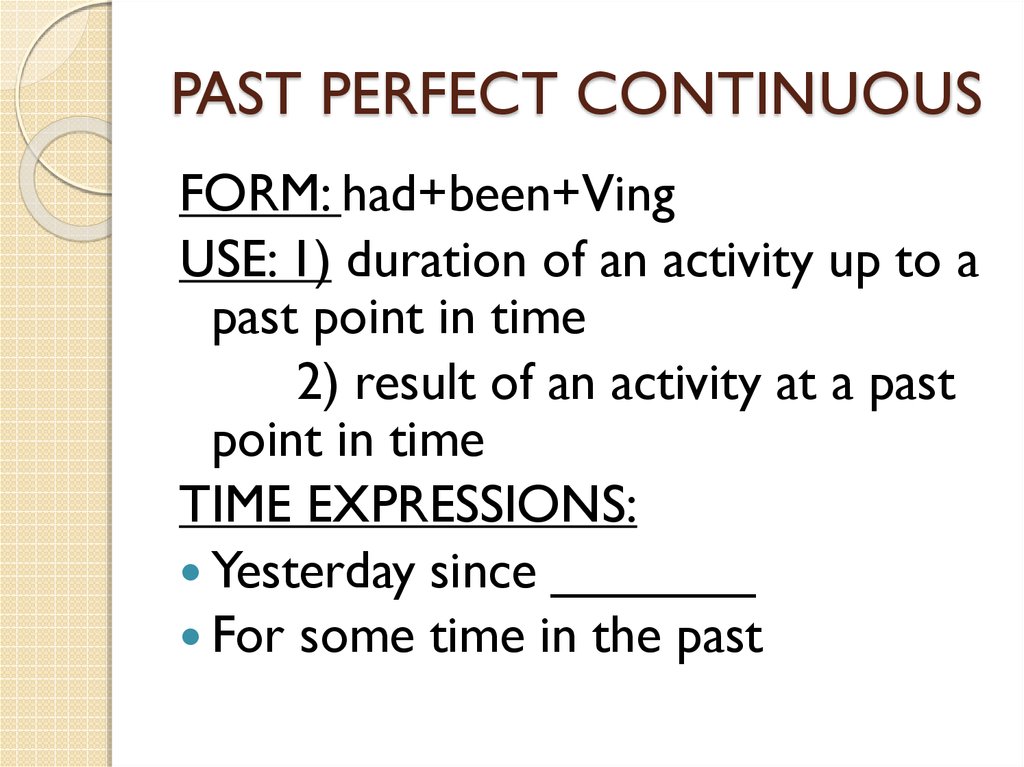
If you see this word, it can be an indication that you are dealing with a past perfect or past perfect continuous.

Had + subject + been + -ing form of the main verb Had I been working? Had you been working? Had he/she/it been working? Had we been working? Had you been working? Had they been working? Time indicators First, you put the auxiliary verb, followed by the subject, been, and the -ing form of the main verb. I hadnot been working You had not been working He/she/it had not been working We had not been working You had not been working They had not been working Past perfect continuous questionsįorming questions in the past perfect continuous is a little more complicated. Information: The past perfect simple as well as the past perfect continuous are frequently utilized in conditional III sentences (if-clauses type 3), and also when describing something in reported speech.To make the negative form, you put ‘not’ right after the auxiliary ‘had’.In this sentence both clauses refer to the past tense. The past perfect simple suggests something more permanent than the past perfect continuous, which can imply that something is temporary. The past perfect continuous is composed of two elements - the past perfect of the verb to be (had been) + the present participle (base+ing).

Past perfect continuous vs past perfect full#
Use British English spelling and full forms ( I have ), not short forms ( Ive ). When the three bears got home they realised someone had used their things. The past perfect progressive describes an action in progress at a specified or understood past reference time that occurred before some other specified or. The past perfect simple refers to actions that were completed while the past perfect continuous describes activities that were not completed before a point in. Complete the text with the past perfect simple or past perfect continuous form of the verbs from the box. An action started before and continued up to a fixed time in the past: Past perfect simple, past perfect continuous.

This tense strongly emphasizes the process of the action and not just the fact that it occurred (as the past perfect simple does).

In principle, the past perfect continuous describes actions that happened before certain events in the past. Here's an exercise about the past perfect. However, 'would' is always followed by the infinitive, but 'had' is followed by the past participle. Be careful, because the short form for 'would' is also 'd. It's 'had' + been (the past participle of 'be')+ verb-ing.
Past perfect continuous vs past perfect how to#
When is the past perfect continuous used? Kenneth Beare Updated on MaThe two most advanced tenses in the past are the past perfect and past perfect continuous. Here's how to make the past perfect continuous.


 0 kommentar(er)
0 kommentar(er)
